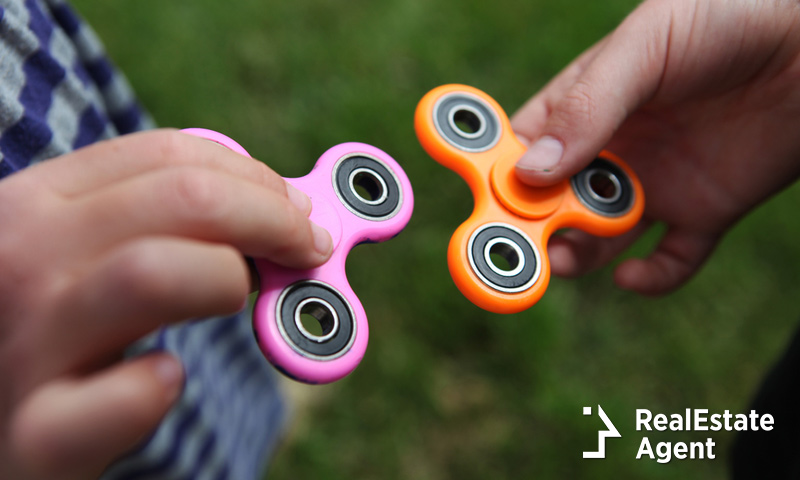From teachers to special education students to busy CEO’s in high-rise real estate, to moms with children who have ADHD or children on the autism spectrum disorder, fidget spinners are all the rage. Many of the toys stores can’t keep the “toys” in stock, parents are looking for ways to DIY their own with LEGO fidget spinners, and educators argue every side of the question, and speaking of toys stores did you heard that Toys R Us is closing ?
Do you allow fidget spinners in your home? Many say this isn’t just a toy, but a therapeutic tool for kids and adults with various challenges that can be calmed with the help of fidget toys.
The original fidget spinner may or may not have been created by a lady back in the 90’s; reports say a Ms. Hettinger applied for a patent and pitched her spinning toy to Hasbro, who turned it down. The patent lapsed, but Hettinger made many in her laundry room and sold them herself at fairs – when she wasn’t working her day job, which was that of a chemical engineer.
The mania for 3-inch twirling gadgets has been taking over classrooms and cubicles for sometime now, momentum gaining after controversy about fidget toys exploded and educators and therapists became sharply divided over the issue. One faction decries allowing the toys at school, claiming them to be a distraction; others say the ability to fidget helps children with attention disorders focus better on classwork.
It’s not a new idea. Fidget toys have been around for years, praised by parents of children on the autism spectrum disorder or who have attention deficit. They are a terrific tool at home or in the office, as more adults reach for similar devices to help them manage tics like knee juggling or foot tapping.
However, educators are splitting over whether they are really advantageous for classroom use. Could a fidget spinner need to require an IEP? There’s no denying that a room full of spinners could get out of control. However, special education teachers say they could be a good thing, if rules about use are followed in special education classrooms. One teacher said after spring break, half her class of 25 had spinners. She lets them spin as long as it’s out of sight under their desk.
Plenty of kids not on the autism spectrum disorder love the fidget toys too. There are plenty of YouTube videos already showing tricks – it’s like a yo-yo craze all over again, according to some historians, who also liken the toy to this generation’s hula hoop.
Like the original yo-yo, supply just can’t seem to keep up with demand. Amazon repeatedly sells out (18 of the 20 top selling toys on the site are fidget spinners, and the other two are fidget cubes … might be this the reason why Amazon HQ2 sets a new commercial real estate trend), and Toys R Us resorted to flying product in from China rather than wait for freight by ship. A toy store owner with a shop on some prime real estate says he can’t keep the toys in stock, and recently placed a 2,000-unit order because they were selling at the rate of 150 spinners a day… a booming increase for the commercial real estate.
At home, it’s free game say most parents, adding that their kids’ love of spinner is universal. Both kids on the spectrum and off love the toys, and many adults are getting in on the craze as well, citing it as a great way to burn off nervous energy when quitting smoking, for example.








